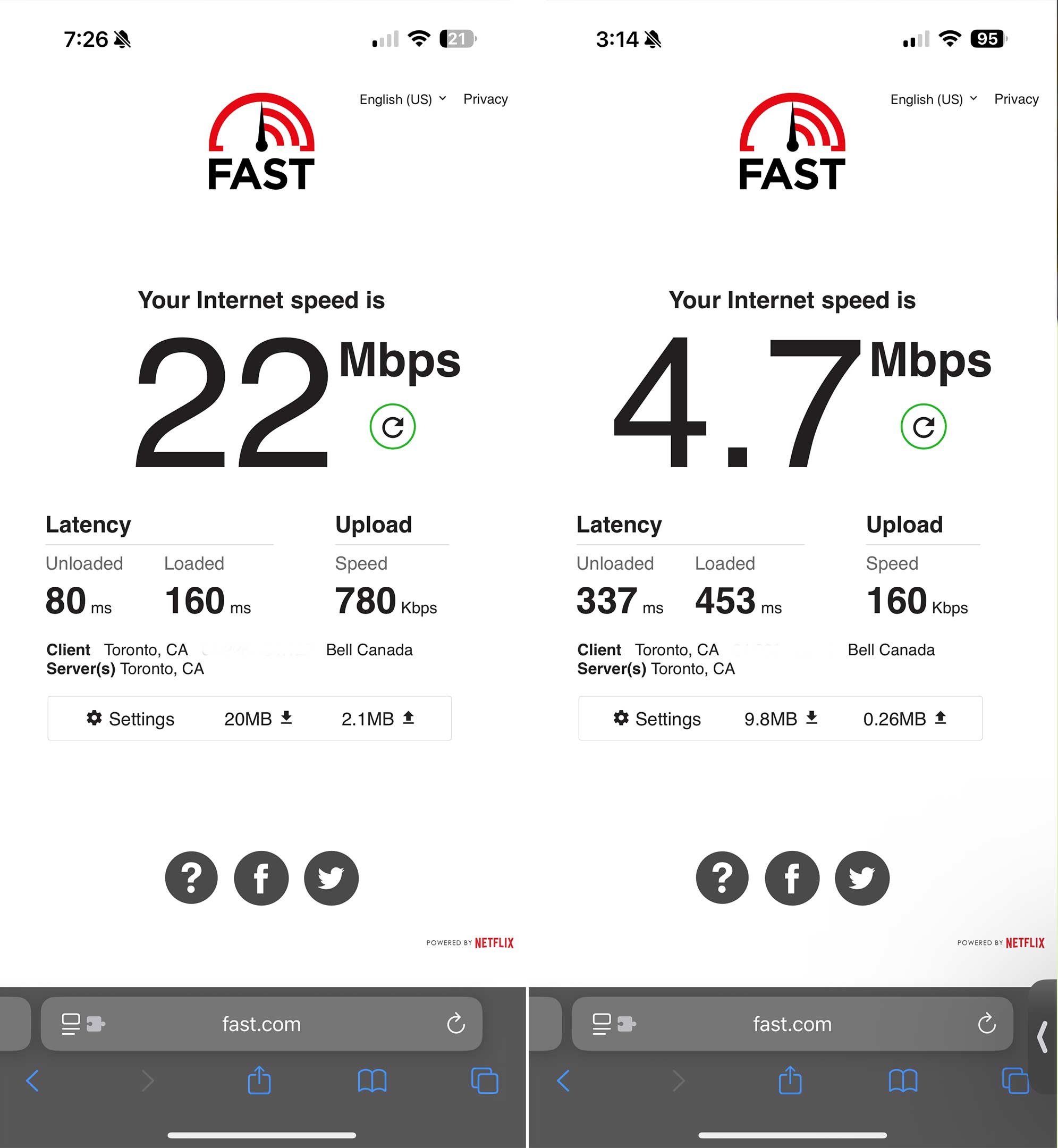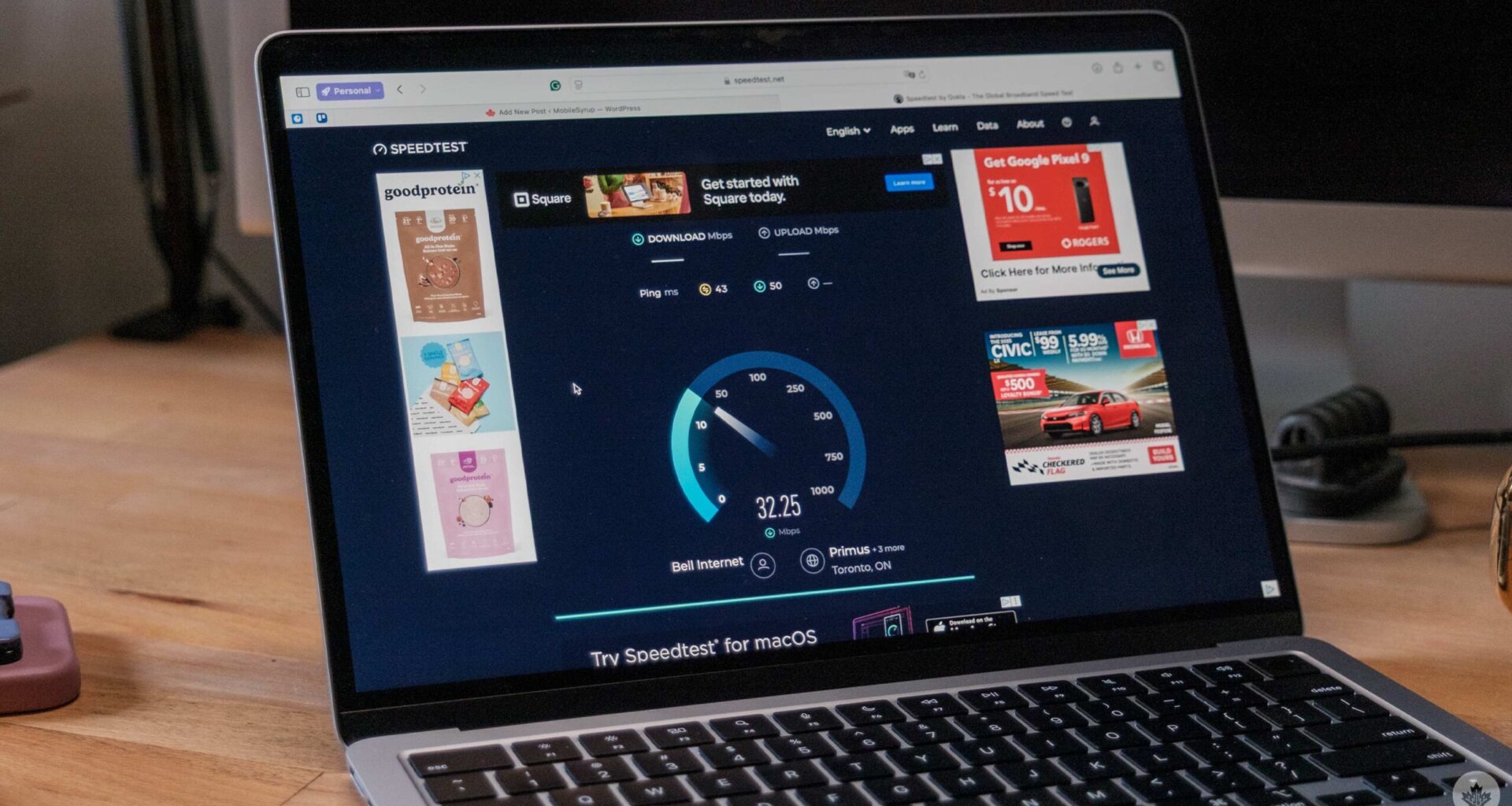Hi, my name is Brad, and I’m an internet addict.
I regularly use terabytes of online bandwidth each month, and up until recently, I was living in Toronto with a dreamy 1.5 Gbps fibre connection that was the light of my life. However, that all changed when I moved, and my new building only offered DSL from Bell.
Rogers and TekSavvy both offer faster connections in our area, and we’re going to switch now, but I thought it would be interesting to document some of the hurdles I’ve had with my slow connection over the last 30 days.
Multiple people, dream on
When the Bell tech came over to set up our supposedly 50 Mbps connection, he struggled and ended up telling us that the wiring in our home was too old and the best he could do was around 26 Mbps down, (I’ve recorded speeds up to 35Mbps infrequently) and 700 Kbps up.
For most tasks, the 26 Mbps down hasn’t been as disruptive as I expected. I can usually stream YouTube, Reels, or whatever else without issue. However, that’s only when there’s a clean line. If my partner is also trying to stream, things often freeze up, and we’ll both be knocked down to 480p or worse. Downloading large files is also a no-go during work hours since that also clogs up the network. All the modern 100GB+ games I’ve re-downloaded since moving here have taken around nine hours overnight to download.
Sometimes, even when no one is using the internet, there are still slowdowns. Randomly, the other day, I clocked the max speed coming into the house at around 7 Mbps, which was not enough for two people to work, and web pages were taking forever to load. Even downloading small things like app updates took so long that it felt like it wasn’t worth it to do them. And uploading photos for work was basically impossible.

On the left is a speed test from my first day here. On the right is a test recorded while writing.
Uploading in general is a huge pain. At our max speeds of less than a megabyte, it takes minutes to send a photo over iMessage or to be uploaded to a story for MobileSyrup. I’ve resorted to using my mobile data whenever I need to upload video content to the MobileSyrup social channels because our Wi-Fi made it too slow. I was also held back the other day when I needed to download the Android 16 beta and it took a super long time, then when I finished my story it took another ten minutes just to upload my photo samples.
Overall, the network is enough, but just barely. I shudder to think about how terrible it would be if a family of four needed to share this bandwidth. I’m also lucky that I’m not doing more video work right now because needing to upload and download a lot of video files would be a nightmare.
I’m hoping Teksavvy will be able to save us with a faster connection, but time will tell. Overall, I think this is a good exploration of how many Canadians live. Once you have fast internet over 100Mbps, you stop worrying about it, and things just work all the time. However, for those of us on the fringes and in weird dead zones, it can be a struggle to do things others take for granted.
And things are relying more and more on the internet than ever before. For instance, you can barely own a modern game console without a fast, high-speed connection for online play and downloading games. On top of that, I think people just use more internet than we used to. There are more video apps than ever before, and as things get higher quality, they usually use more bandwidth.
All that is to say, while the CRTC has targets 50Mbps as the low-end of high speed, that’s barely enough for modern families. I think we should be making our targets for new installations with more forward-thinking goals, like fibre. It’s tough to live through slow internet speeds like this and then see things like Bell complaining to the CRTC about sharing infrastructure and threatening to stop investing in new fibre. In a modern world, all Canadians should be connected at speeds that are as fast as they can get in the same way we were all able to get the same phone line standards.
MobileSyrup may earn a commission from purchases made via our links, which helps fund the journalism we provide free on our website. These links do not influence our editorial content. Support us here.
